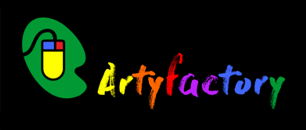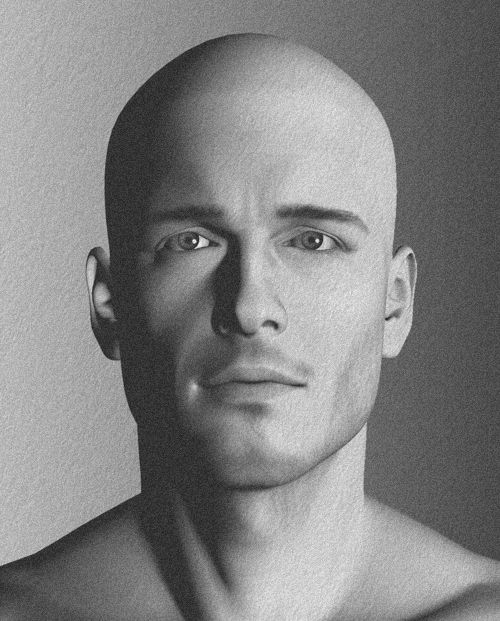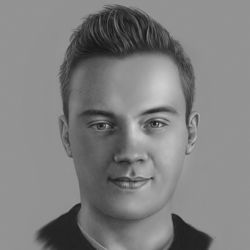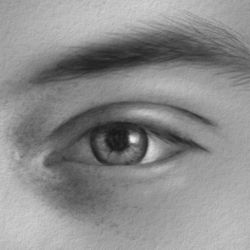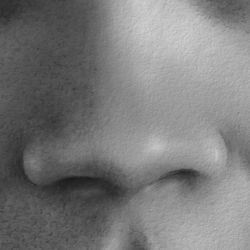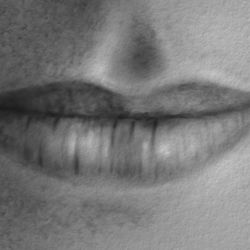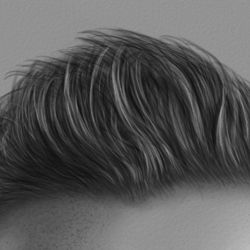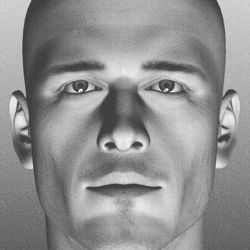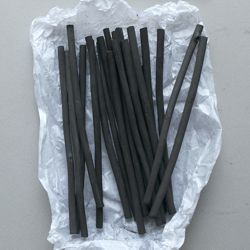Charcoal Portraits - Portrait Lighting Techniques
This lesson illustrates how you set up the lighting of a portrait to impact the mood of the artwork.
- charcoal-portrait-lighting-left-side
Light source from the left.
- charcoal-portrait-lighting-right-side
Light source from the right.
- charcoal-portrait-lighting-front
Light source from the front.
- charcoal-portrait-lighting-above
Light source from above.
- charcoal-portrait-lighting-below
Light source from below.
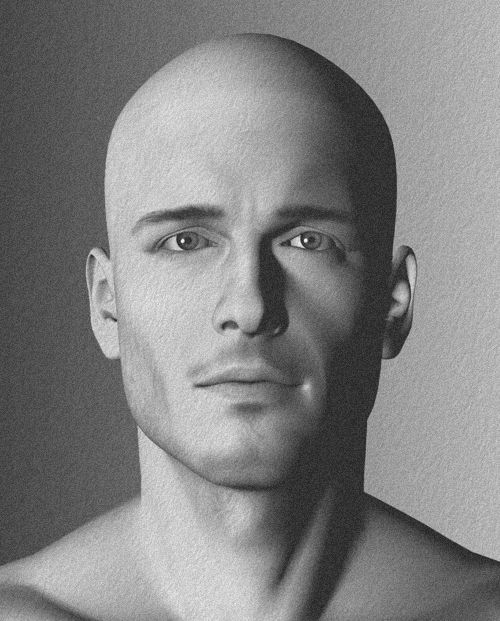
How you set up the lighting of your portrait can have a dramatic effect on the mood of the work. Our slide show above illustrates some examples of the different physical and psychological effects on the same subject due to changing lighting conditions.
Portrait Lighting Techniques:
a side light
Click on the flip icon to alternate side lights.
Using a side light accentuates the three dimensional form of the subject which is further enhanced by the contrasting background. With one side of the face more visible and the other more hidden it also adds a psychological depth to the character of the sitter. There is no real difference whether you light your subject from the left or the right. It is just a matter of personal choice.
Portrait Lighting Techniques: a front light
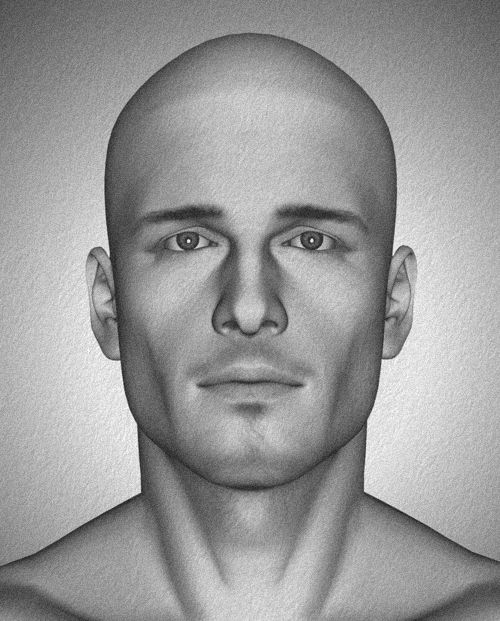
A front light
Using a front light creates a cold impassive 'mugshot', the type of photo booth image that documents a face for official purposes. This unimaginative and functional lighting is probably the reason why most of us hate our passport or ID-photographs.
Portrait Lighting Techniques: a top light
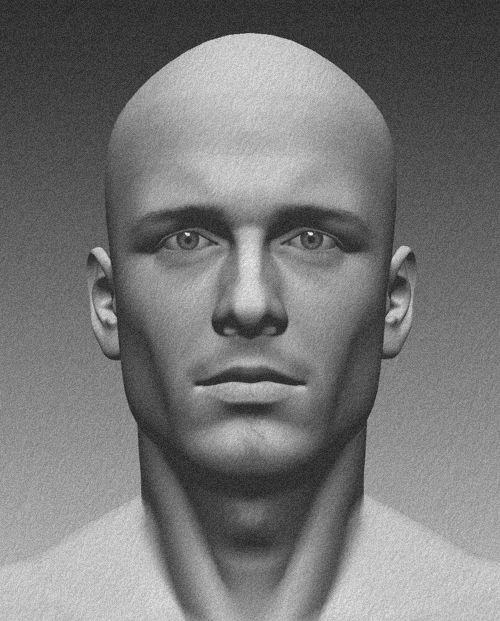
A top light
Using a top light creates an other-worldly atmosphere. This direct light source suggests some kind of external influence that evokes a spiritual or contemplative mood.
Portrait Lighting Techniques: a bottom light
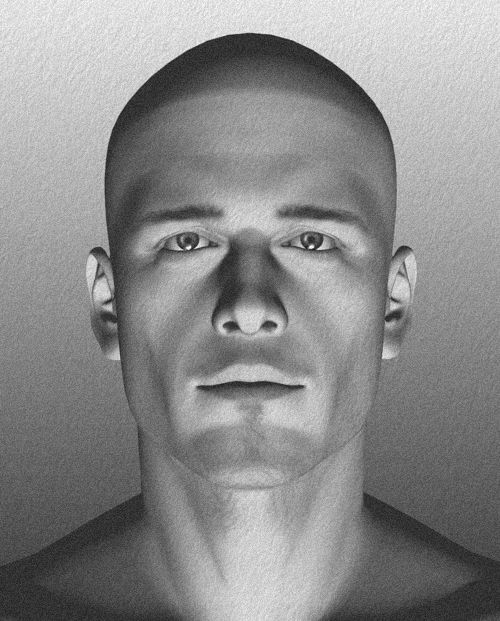
A bottom light
If we interpret direct light from above as having a spiritual origin, we correspondingly understand direct light from below as having a malevolent one. The light source is turned upside down, switching the planes of the face from a reassuring positive to a disturbing negative. Features that we normally assume to be dark such as the eye sockets, below the nose and the upper lip, flip to light and confound your expectations. Consequently, a bottom light source is most frequently used in images of horror.
